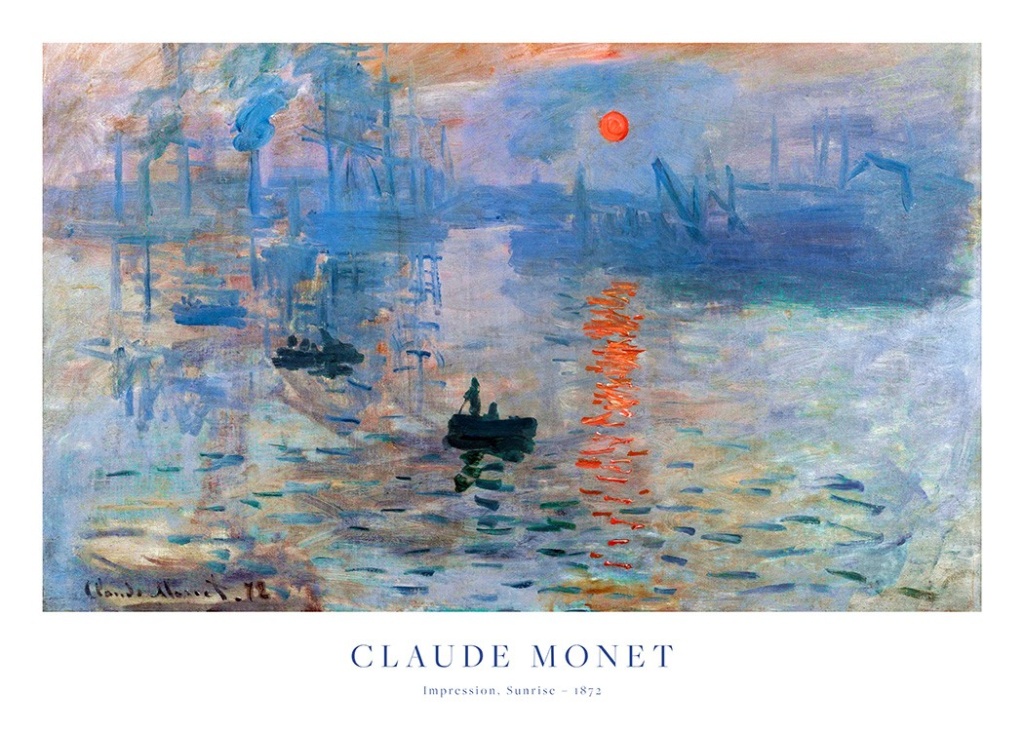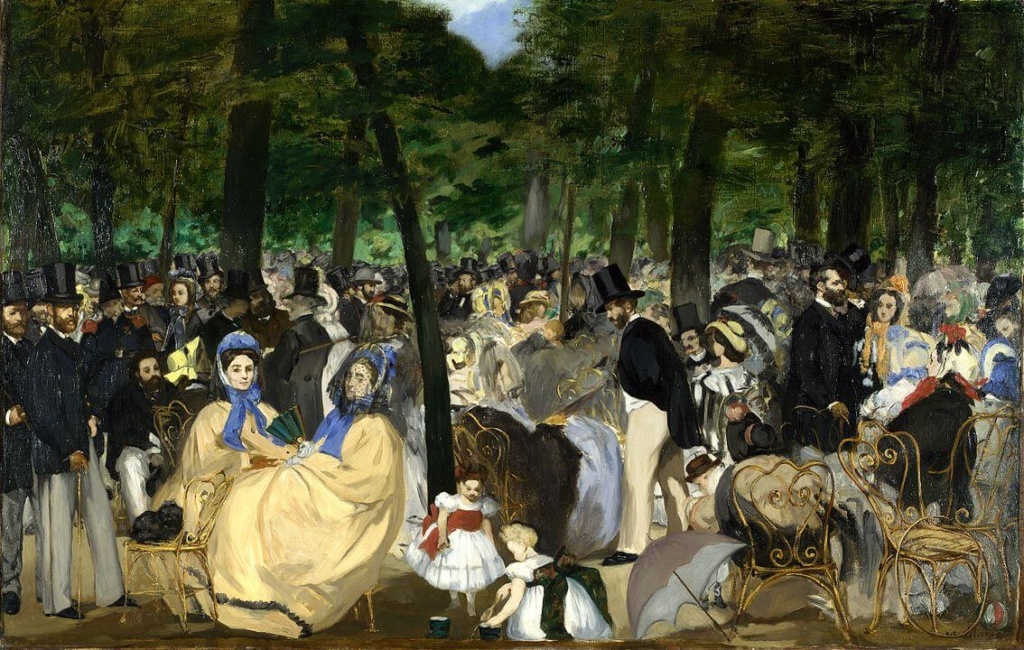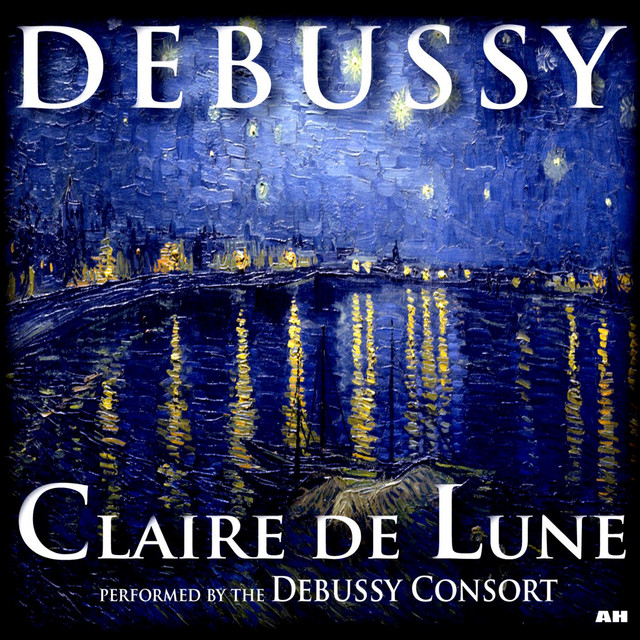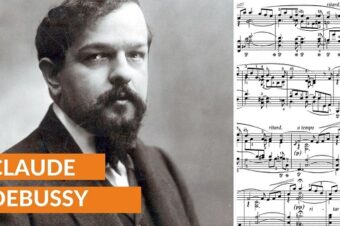Compiled by ArtiZen Editor
Impressionism is a style of painting or art movement formed in the late 19th century in Paris. The style is represented by a group of about 30 painters who shared a set of related approaches and techniques such as accurately and objectively recording temporary modern life and the transient effects of light and color. Impressionism helped redirect art toward personal expression and the artistic process, promoting painting outdoor natural scenes and ‘spontaneity’ on the spot rather than creating in a studio from sketches.
Notable impressionist painters include: Claude Monet, Pierre-Auguste Renoir, Edgar Degas, Paul Cezanne, and Camille Pissarro.
The style name of ‘Impressionism’ derives from the title of a Claude Monet’s work, Impression: Sunrise, a derisive term coined by an art critic Louis Leroy in a satirical 1874 review of the First Impressionist Exhibition published in the Parisian newspaper Le Charivari. This visual art originated style soon attains momentum in other media space such like music and literature.

Impressionism in Painting
In contrast to traditional painting methods, Impressionists are revolutionary in adopting an innovative practice of painting entirely outdoors while looking at the actual scene instead of finishing work sketches in the studio. Claude Monet was also inspired by Eugene Bouldin and Johan Barthold Jongkind, who depicted fleeting effects of sea and sky in flat colors and deliberate brushstrokes.

(Music in the Tuileries, 1862 by Édouard Manet)
In the late 1860s, Monet, Pissarro, Renoir, and others began painting landscapes and rivers in which they tried to dispassionately record the colors and forms of objects as they appeared in natural light at a given time. These artists abandoned the traditional landscapes palette of muted greens, browns, and grays and instead adopted a lighter, sunnier, more brilliant tone. They learned to build up objects out of discrete flecks and dabs of pure harmonizing and contrasting colors, thus evoking the broken-hued brilliance and the variation hue produced by sunlight and its reflections. Thus forms lost their clear outlines and became dematerialized, shimmering and vibrating in a re-creation of actual outdoor conditions. In addition, formal compositions were abandoned in favor of a more casual and less contrived disposition of objects. The Impressionists extend their new techniques to depict landscapes, trees, houses, and even urban street scenes.
At first, some avant-garde artists’ work was accepted into the Salon, which is the annual state-sponsored public exhibition, then by the end of the decade, they were being consistently rejected and recognized the unfairness of the Salon’s jury system as well as the small painting disadvantages. Later in 1973, a patchwork of independent artists started to organize their own exhibits. Between 1876 and 1886, seven more exhibits were staged. However, some independent artists were disapproving of the Impressionism style title. Still, they were all united in their work by the principles of freedom of technique, and meanwhile developing their own personal styles in the following years.
By the 1880s, as each painter increasingly pursued their own aesthetic interests, the impressionism group began to dissolve after cultivating a great revolution in the history of art, opening a path for Post-impressionism and subsequent artists of western painting. This also leads to a starting point for Cezanne, Gauguin, Georges Seurat, and Vincent Van Gogh to diverge from traditional techniques to subject matter.
Impressionism in Music

Impressionism is an aesthetic term borrowed into the music composition from French painting during the late 19th and early 20th century. It described a movement among various composers in Western classical music whose music focuses on mood and atmosphere, conveying the moods and emotions aroused by the subject rather than a detailed tone-picture”.
The most prominent feature in musical impressionism is the use of ‘color’, or in musical terms, timbre, which can be achieved through chord combinations, ambiguous tonality, extended harmonies, use of modes, exotic scales, parallel motion, extra musicality and evocative titles.
Claude Debussy and Maurice Ravel are two leading figures in Impressionism. Although Debussy then rejected the label due to its derisive critic connotation by the traditional art circle, his music work typically ‘evoke a mood, feeling, atmosphere, or scene’ by creating music images through characteristic motifs, harmony, pentatonic scales, instrumental timbre, heavy use of piano pedal elements etc.

Debussy’s most substantial orchestral work features La Mer 1905, Clair De Lune in 1890. Debussy wrote many piano pieces with titles evocative of nature and Impressionist painters use of brush-strokes and dots is paralleled in the music of Debussy. For instance, Some scholars call La Mer “the greatest example of an orchestral impressionist work”
In an interview, Debussy described a pantheistic eulogy to Nature:
‘I have made mysterious Nature my religion … When I gaze at a sunset sky and spend hours contemplating its marvelous ever-changing beauty, an extraordinary emotion overwhelms me. Nature in all its vastness is truthfully reflected in my sincere though feeble soul. Around me are the trees stretching up their branches to the skies, the perfumed flowers gladdening the meadow, the gentle grass-carpeted earth, … and my hands unconsciously assume an attitude of adoration. ’ —— Claude Debussy
The perception of Debussy’s compositional language as decidedly post-romantic/Impressionistic—nuanced, understated, and subtle—is firmly solidified among today’s musicians and well-informed audiences.
Reference:
https://www.britannica.com/art/Impressionism-art
https://en.wikipedia.org/wiki/Impressionism_in_music
https://en.wikipedia.org/wiki/Claude_Debussy#Debussy_and_Impressionism




